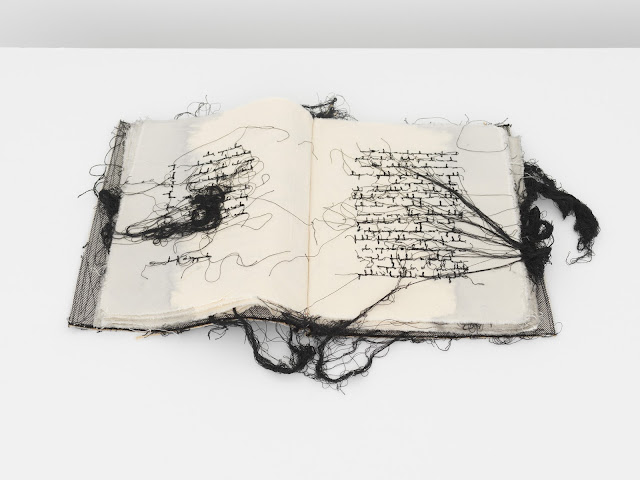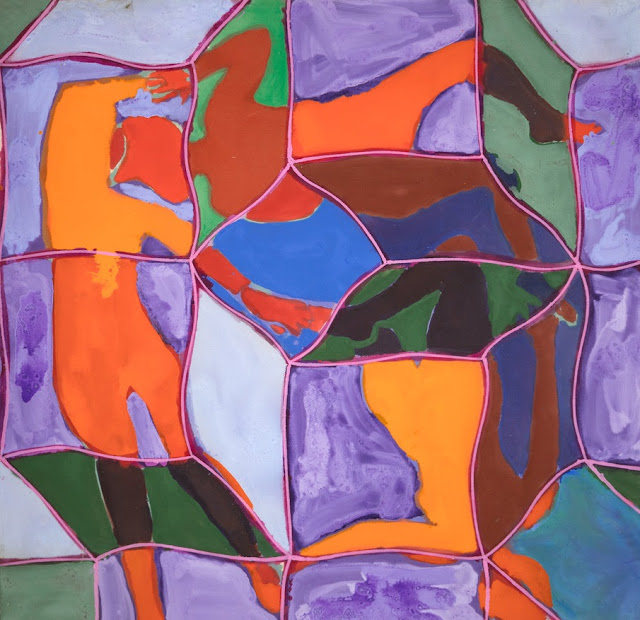Judit Reigl (1923 - 2020) was a Hungarian painter who lived in France.
Most of her paintings which were included in the show at galerie À l'Étoile scellée are more abstract, the exhibited canvases were Reigl's first experimentation with automatic writing, a technique that recurs in various forms throughout her oeuvre. Reigl's automatism arode from instinctive gestures of her body and showcases movement, levitation, tension and changes in processes, rhythms and roots of existence on spectacular large canvases. Figurative- and non-figurative representation was for her a question of encoding and de-coding but may also be anthropomorphic.
Reigl used her body as her primary instrument when creating the series Outburst which she began in 1955. The Outbursts series is different from her earlier paintings with automatic writing in that they no longer used improvised metal tools to make spontaneous gestural marks. She began with throwing thick industrial pigment mixed with linseed oil onto the canvas with her hands and continued by vigorously scraping it from the center to the edges with a tool. In a 1956 Outburst in the collection of the Solomon R. Guggenheim Museum, the relatively spare composition is punctuated by thick impastos or forceful marks. The artist later explained this time in her life as a transitional period when she severed her ties with the Surrealists. The Outbursts are explosions of mass, radiating from a center as bursts of pure energy.
For her following series Mass Writing , Reigl applied large volumes of thick, slow-drying black pigment to the canvas using a blade or a stick, and then painted with upward strokes. In these works, the black areas are dispersed outward toward the edges of the canvas. While working on these canvases, Reigl inadvertently began in 1958 working on an innovative oeuvre of paintings called Guanos, in which she reworked rejected canvases that had been covering the floor of her studio. The textured surface of these paintings evoke the archeological which was further affirmed by the artist herself when she referred to the canvases becoming "fertile ground" for new paintings.Wikipedia





















































